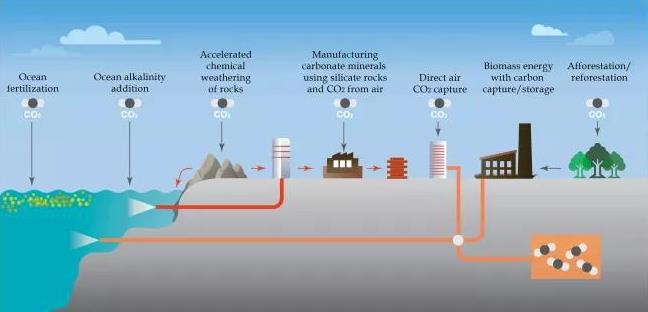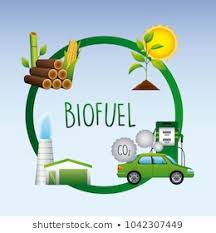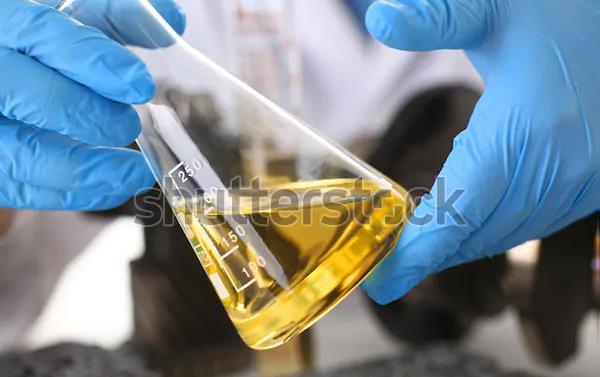
What is a “Sustainable Fuel”?
Wikipedia states that
“Sustainable energy is the practice of using energy in a way that “meets the needs of the present without compromising the ability of future generations to meet their own needs.” … When referring to methods of producing energy, the term “sustainable energy” is often used interchangeably with the term “renewable energy””
BP defines Sustainable Aviation Fuels as:
“SAF stands for sustainable aviation fuel. It’s produced from sustainable, renewable feedstocks and is very similar in its chemistry to fossil jet fuel. Using SAF results in a reduction of CO2 emissions compared to fossil jet fuel over the lifecycle of the fuel. Some typical feedstocks used are cooking oil and other non-palm waste oils from animals or plants; solid waste from homes and businesses, such as packaging, paper, textiles, and food scraps that would otherwise go to landfill or incineration. Other potential sources include forestry waste, such as waste wood, and energy crops, including fast growing plants and algae.”
The EU Directive on renewable energy 2018/2001 describes renewable energy as “energy from renewable non-fossil sources, namely wind, solar (solar thermal and solar photovoltaic) and geothermal energy, ambient energy, tide, wave and other ocean energy, hydropower, biomass, landfill gas, sewage treatment plant gas, and biogas;”
Nowadays Sustainable Fuels are broken down into two parts; firstly “Biofuels”, which are the fuels produced from renewable feedstocks. They can be first generation being derived directly from edible crop or vegetable growing or second generation being derived from particular crops, or vegetable matter that are then distilled to produce combustible material or gases. These particular crops can be residue or waste which is processed to produce these combustible materials. These biofuels are part of a larger process of using organic vegetation for various purposes known as “Biomass”.
Secondly there are “Synthetic Fuels”. These are synthetic or man-made fuels or gas known as
syngas which are made from hydrogen, carbon monoxide, and carbon dioxide. The process is complicated and undeveloped at present, involving sucking or capturing CO2 from the atmosphere. Wikipedia describes various “reactions” that have to take place for the fuel to be produced. Being synthetic, it can be made from waste, so for example can be produced from residue or gases emitted from burning coal or other matter. Because they take CO2 out of the atmosphere, these synthetic fuels have attracted a great deal of attention from fuel users like aviation.
The EU Commission Inception Impact Assessment for the 4th quarter of 2020 states of sustainable aviation fuels that “A meaningful deployment of SAF in the aviation market will lead to a net decrease of the air transport sector’s CO2 emissions, as well as non-CO2 emissions’ impact on the climate. SAF can achieve as high as 80% emissions savings compared to conventional jet fuel, and therefore, if deployed at a large scale, have important potential to help aviation contribute to EU reaching its climate targets.” Bold words indeed but are they even remotely justified?

Biomass and Biofuels
Much has been written about the advantages of being able to grow a crop, which absorbs CO2 (known as “capture”) and then using it in combustion. Biofuels will emit CO2 in much the same way as a fossil fuel but, so the argument goes, as it has captured CO2 in its growth, it will be “carbon neutral” – in other words it will have captured all the CO2 that it subsequently emits.
The Government claim that biofuels “can achieve lifecycle emissions savings of over 70% compared with conventional jet fuel, when fully replacing kerosene” [Sustainable aviation fuels mandate-A consultation on reducing the greenhouse gas emissions of aviation fuels in the UK]. The Government has not conducted its own research to express this view but rather relied upon IATA. IATA say in their “Sustainable Aviation Factsheet 5” that:
“Relative to fossil fuels, sustainably-produced, unconventional, jet fuel results in a reduction in carbon dioxide (CO2) emissions across its life cycle. Carbon dioxide absorbed by plants during the growth of biomass is roughly equivalent to the amount of carbon dioxide produced when the fuel is burned in a combustion engine, which is simply returned to the atmosphere. This would allow the SAF to be approximately carbon-neutral over its life cycle. However, there are emissions produced during the production of SAF, from the equipment needed to grow the crop, transport the raw goods, refine the fuel and so on. When these elements are accounted for, the use of sustainable aviation fuel has been shown to provide significant reductions in overall CO2 lifecycle emissions compared to fossil fuels, up to 80% in some cases.”
What, of course, IATA do not point out is that these plants are growing on land that would otherwise be growing food crops which absorb an equal amount of CO2 when growing. There is therefore no net saving at all, since there is no extra absorption of CO2 from the atmosphere. You might as well have grown the crops for food and extracted fossil fuels.
John DeCicco, Research Professor, University of Michigan writing in 2016 for “The Conversation” stated that
“Existing crop growth already takes large amounts of CO2 out of the atmosphere…….Most of the crops that went into biofuels during this period were already being cultivated; the main change was that farmers sold more of their harvest to biofuel makers and less for food and animal feed” and
“But as long as growing conditions remain constant, corn plants take CO2 out of the atmosphere at the same rate regardless of how the corn is used. Therefore, to properly evaluate biofuels, one must evaluate CO2 uptake on all cropland. After all, crop growth is the CO2 “sponge” that takes carbon out of the atmosphere”.
He concluded his work with the words:
“Once carbon has been removed from the air, it rarely makes sense to expend energy and emissions to process it into biofuels only to burn the carbon and re-release it into the atmosphere.”
There can be some emission reduction though in re-using fuels or even growing fuel crops – but it will not be the full capture of growth. Trees cease to be carbon capturers after maturity during decay and there is a net benefit in CO2 emissions reduction by growing trees to maturity, cutting them down for use and replanting trees for new capture. Similarly, waste oil that has been produced from capture in its first generation may be used more CO2 emission efficiently by re-use as second generation, than being discarded and becoming a carbon emitter on its degradation
The Committee on Climate Change wrote a paper in 2018 on “Biomass in a low carbon economy”. The CCC say that
“Managed harvesting and replanting of afforested land enables both land carbon stocks
and long-lived product stores to be increased, allows the substitution of fossil fuel emissions elsewhere in the economy, and offers a hedging strategy against current uncertainty over
the evolution of future forest carbon sinks.
“Land used for energy crops has a much lower equilibrium carbon content than forested land, but can provide higher average annual biomass yields. If this biomass is utilised with limited supply chain emissions, and with long-term geological storage (BECCS), then energy crops can provide greater cumulative long-term sequestration of carbon than afforestation. This arises due to their potential for continual increases in geologically stored carbon with ongoing BECCS usage, eventually outweighing the finite store of carbon within an afforested landscape and its products.”
In other words, replenishing stocks can capture more carbon leaving room for extra emissions elsewhere with appropriate subsequent capture or storage, But it is no use growing crops, harvesting them, converting them into fuels, burning those fuels in high CO2 producing jet engines and saying that is that. Perpetual stocks have got to be maintained, only used for limited supply chain emissions and with the long-term bio energy carbon capture and storage.
Carbon Brief said in 2019 in their paper “The challenge of using biofuels to cut transport emissions” that:
“However, significant concerns have emerged that the production of biofuels can lead to land-use changes – such as deforestation – which reduce emissions savings, and even in some cases increase emissions above those of the fossil fuels alternative. There are also concerns that the growth of biofuel feedstocks can increase the degradation of land, water resources and ecosystems. Alongside the disquiet over uncertain emissions savings, there have also been concerns that the use of food crops to produce biofuels could lead to higher agricultural commodity prices. The report notes there is so far little agreement on the magnitude of this problem and its relationship with food security. On the other hand, biofuel markets could also be used as a balance to absorb surplus production of food-crops in normal years and provide a cushion in years of unexpected supply disruptions.”
Matthew Gorman director of carbon strategy of Heathrow Airport Limited is a little more upbeat in his writings on LinkedIn. He says that there are emissions savings from waste that is no longer going into landfill and thereafter producing methane, and also savings with industrial emissions being recycled rather than going straight into the atmosphere. He also points to hydrogen fuel and synthetic fuel (more on that later) as well as scaling up second generation biofuels. He said that
“We need to base our arguments on clear, transparent evidence so that we can be held to account. That’s what the UK’s Sustainable Aviation coalition did when it published a detailed 80 page pathway to net zero alongside its fuels roadmap”.
Few would argue that we need clear transparent evidence. Many would argue that this is exactly what the aviation industry has not done and certainly the Sustainable Aviation coalition has not done. Their statements that “UK aviation’s CO2 emissions are expected to be broadly in line with levels recommended by the Committee on Climate Change” and “the aviation industry in the UK will be able to accommodate significant growth through to 2050, including the effect of additional runway capacity in the South East of England, without a substantial increase in CO2 emissions” are so far from truth or reality as to be incredible. They are also unsubstantiated. They also do not accord with what the Committee on Climate Change has said, including its letter of advice from Lord Deben to Grant Shapps.
Velocys PLC has pointed to its new waste fuel production plant being built in Mississippi US in which they will produce fuels from waste and capture the carbon produced in the process. Their CEO is reported as saying in 2019 that “This will make the facility a net negative emitter of carbon dioxide, which is highly desirable from both an environmental and an investment point of view.”
The answer to that may well be that this is all very well, but when the fuel gets put into the aircraft it is still going to spew out uncaptured CO2 into the atmosphere at high altitude (not to mention the other poisonous pollutants like ultra-fine particulates). There is no mention either of the non-CO2 greenhouse gases that are so significant with aviation.
Hydrogen combusted at ground level has some future but at high altitude there will be significant environmental problems. Hydrogen combusts with oxygen to produce water vapour. Water vapour at high altitude is a greenhouse gas. Non CO2 greenhouse gases are estimated to be equally damaging as CO2 effectively doubling the greenhouse effect over CO2 emissions alone.
In its technical report of 2019, the Committee on Climate Change stated that their review of the uses of biomass in a low-carbon economy indicated that the best uses for biomass are those which permanently sequester carbon, such as using wood in construction and Bioenergy with Carbon Capture and Storage. They stated that the use of biofuels in surface transport should be phased out during the 2030s. There seems to be considerable concern that biofuels are going to be squandered as a panacea by growing crops on agricultural land otherwise used for food production, or woodland or other land capturing carbon dioxide, and burning ever more fuel. That is not the way we are going to reduce global warming.
The Committee on Climate Change has stated that some deployment of biofuels would be appropriate for aviation, but this is likely to be no more than 10% of the aviation fuels used by 2050 and also (and this is a fairly big “but”)
“Major technological breakthroughs in commercial aviation are unlikely to make a significant difference to emissions by 2050 given long development and certification lead times, and slow turnover of the fleet” (letter Lord Deben to Grant Shapps dated 24th September 2019 at page 9)
It is also noteworthy that the Committee on Climate Change said in the same letter that compliance with the necessary 30 MtCO2 per year from UK aviation might be possible with “some use of sustainable biofuels, and by limiting demand growth to at most 25% above current levels”
In other words, no quick fix on this from biofuels and certainly not a “doubling of passenger numbers” as has been stated by “Our Future Skies”, the consortium of airlines, airports, Airport Operators Association, DfT, CAA, Airspace Change Organising Group [see Our Future Skies environment page on the upgrading of UK air space in which they say “Upgrading airspace is projected to help the government meet its 50% reduction in net emissions target while accommodating a doubling of passenger numbers by 2050”].
Predictably Heathrow disagree with the Committee on Climate Change. John Holland Kaye addressing the Forum arranged by the Heathrow Community Engagement Board stated that “we should be able to get 100% sustainable fuels”.
Pigs are likely to fly first.

Synthetic Fuels
The concept of these is promising. The concept of capturing CO2 in a man made process, producing a fuel virtually out of nothing and genuinely have a net zero situation, when on combustion no more CO2 is produced than was captured, is extremely attractive. Mind you; so is free electricity and power. As with all utopian dreams there are problems. The biggest problem is that such fuels can only be produced in extremely small quantities and at a very high price. The Committee on Climate Change has stated that:
“It is possible that synthetic carbon-neutral fuels (‘power-to-liquid’) could be used to reduce aviation emissions. Production of such fuels would entail recycling captured CO₂ (e.g. via direct air capture, DAC) in conjunction with zero-carbon hydrogen into a drop-in replacement for kerosene. However, costs for DAC are expected to be high (e.g. in our net-zero advice we estimated that it might be around £300/tCO₂ by 2050). On top of this, production of synthetic fuels is likely to have substantial further costs given low thermodynamic efficiency and multiple processing stages, even if the input electricity comes from low-cost renewables.”
They describe these fuels as “speculative” and at present decline to give any estimated proportion of use.
Contrast this to Matthew Gorman in his LinkedIn writing where he says
“At Heathrow we’re playing our role supporting an Imperial College proposal to trial a direct air capture unit in the relatively CO2 rich environment of the airport. We’re not going to solve this alone as the airport, but one of the things we can do is use our infrastructure as a test-bed as well as advocating the right Government policies pursued with urgency and purpose.”
Seems like a wing and a prayer. Clearly Matthew Gorman and Heathrow desperately want synthetic fuels to work, as do many of us. However, we all need to be realistic and there are huge hurdles to climb. No consideration is given to the calorific or energy value of the fuel, and no consideration has been given to the amount of energy required in making the synthetic fuel. Some of the energy required may be electricity derived from renewable sources, but not all. Development needs to be carried out in (to use Gorman’s words) on clear transparent evidence, not some blind hope that all will be well and the income will continue to flow.
At present “Sustainable Fuels” clearly are not sustainable, notwithstanding what the so called “experts” say. There is so much that we are not being told by both industry and governments. We are being told that these fuels are carbon neutral when clearly they are not. Claims are being made that exclude other emissions. Advice from people concerned for the environment is being ignored or brushed over. First generation biofuels need to be phased out as taking up too much land use and not giving the potential for good land management. The Committee on Climate Change recommends this for all surface transport. First generation should be reserved for food and in the case of timber for permanent carbon retention purposes like construction. Second generation fuels have some applicability, but they are not a complete answer. We cannot simply take the carbon captured and deduct it from the emissions. There are savings to be had from reduced wastage, but these have not been properly quantified – certainly not by the aviation industry. Synthetic fuels are a distant dream at present with some working models but little more. Don’t take any notice of the likes of Richard Branson saying of his and Rolls Royce’s Virgin Galactic proposed supersonic airliner
“The aircraft design also aims to help lead the way toward use of state-of-the-art sustainable aviation fuel. Baselining sustainable technologies and techniques into the aircraft design early on is expected to also act as a catalyst to adoption in the rest of the aviation community”
Of Virgin Galactic’s new aircraft, John Humphries hit the nail on the head when he wrote in the Daily Mail on the 8th August 2020:
“And there’s another big promise — a real humdinger this one. It’s Virgin Galactic’s claim that their planes will use ‘state-of-the-art sustainable aviation fuel’. Sure. And I’m just putting the finishing touches in my garden shed to a system for getting atoms to fuse together so we can all have free electricity for ever. But don’t tell anyone just yet.”
We are being told that Sustainable Fuels are the “get out of jail card”. Just don’t believe a word of it.

Be First to Comment